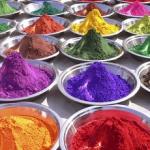
On April 22, 2025, the U.S. Department of Health and Human Services (HHS) and the Food and Drug Administration (FDA) announced a new initiative to phase out all petroleum-derived synthetic dyes from the American food supply.
Key actions announced by the FDA include:
- Setting a national timeline and standard to help the food industry shift from petroleum-based colorants to natural alternatives.
- Beginning the process to revoke approvals for two synthetic color additives—Citrus Red No. 2 and Orange B.
- Partnering with food manufacturers to eliminate six remaining FDA-approved synthetic dyes—FD&C Green No. 3, FD&C Red No. 40, FD&C Yellow No. 5, FD&C Yellow No. 6, FD&C Blue No. 1, and FD&C Blue No. 2—by the end of 2026.
- Authorizing four new natural color additives in the coming weeks, with plans to fast-track additional approvals.
- Collaborating with the National Institutes of Health (NIH) to research the effects of food additives on children's health and development.
- Requesting food companies voluntarily remove FD&C Red No. 3 ahead of the existing 2027–2028 phase-out deadline.
As part of the transition, the FDA is prioritizing review of natural colorants such as calcium phosphate, Galdieria extract blue, gardenia blue, and butterfly pea flower extract. The agency also plans to issue guidance and provide regulatory flexibility to support the industry's shift away from synthetic dyes.
Through its partnership with the NIH Nutrition Regulatory Science and Research Program, the FDA will continue to expand research to inform future food additive policies.
The FDA, a division of the U.S. Department of Health and Human Services, is responsible for ensuring the safety and effectiveness of drugs, medical devices, and vaccines, as well as regulating food, cosmetics, dietary supplements, radiation-emitting products, and tobacco.